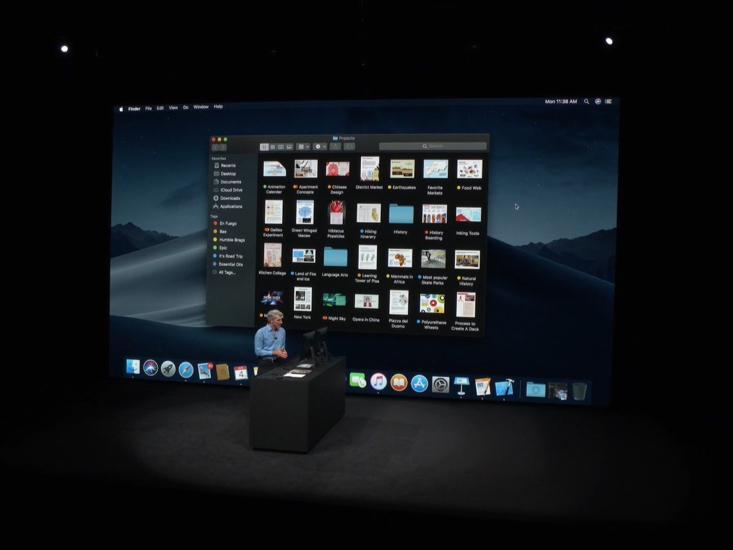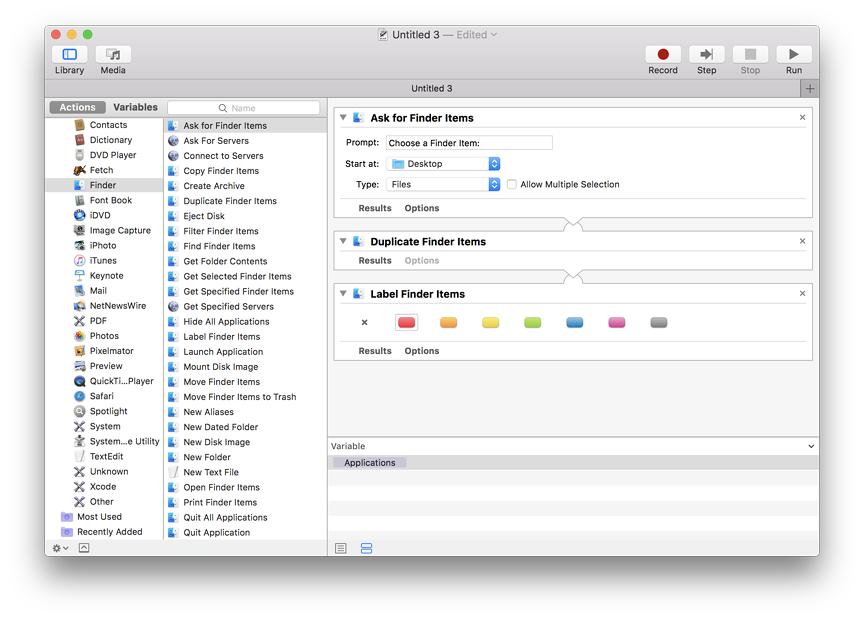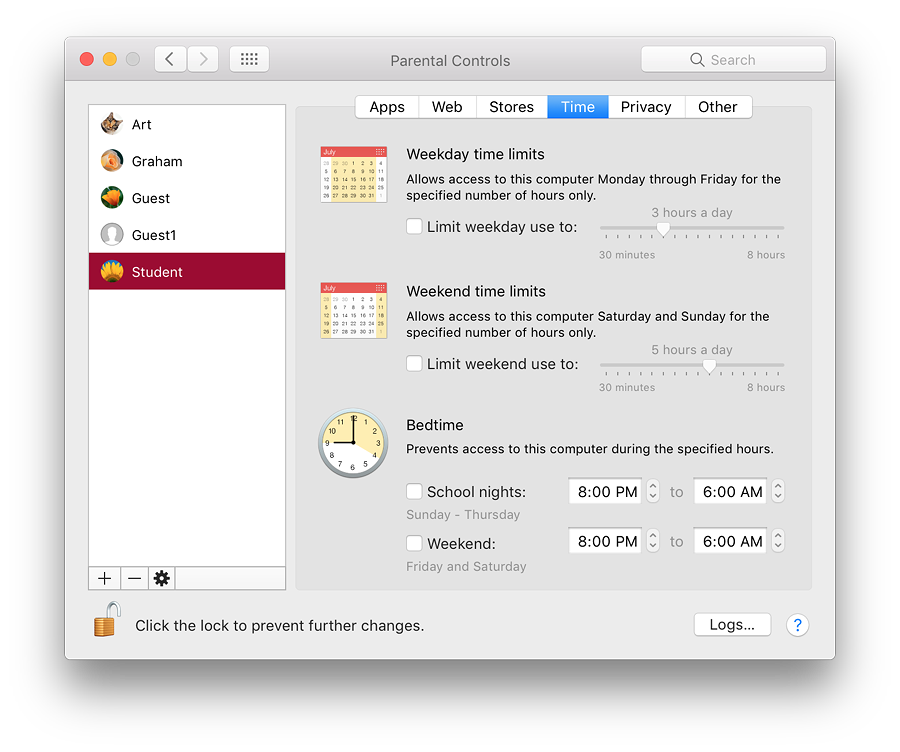|
|
eXtensions - The Wednesday File (61): More from WWDC - Workshop Information, Examination of Beta Releases and Other SourcesBy Graham K. Rogers
This week, Catherine Shu (TechCrunch) has a piece on breaches at another Foxconn factory that makes devices for Amazon, "after an in-depth report by . . . China Labor Watch criticized its appalling working conditions". Of course, this is too good an opportunity to miss and near the end she mentions the earlier problems where Apple devices were made, but does not mention HP or Lenovo or Microsoft or Dell.
And to follow that up, Digitimes repeats what some have called the supply chain's annual rumour, Apple is said to be switching iOS devices from Lightning to USB-C (Jeremey Horowitz, VentureBeat). Several commentators feel this is unlikely, as I do, particularly in the light of the fairly recent outcry even before Apple removed the 3.5mm headphone jack in preference for the digital output from Lightning. There was also a lot of complaining when the MacBook Pro went all USB-C (though not when the Mac Book was first released with its single USB-C port), and in any case Lightning seems to work fine. Of course, in the balance between Digitimes rumours and Apple decision-making, who knows?

Some sites wondered about the absence of hardware - Why was that? they fretted. Well, there rarely is. WWDC is a conference and series of workshops aimed at software developers, which is why it is called the Worldwide Developers Conference. While we watch the Keynote presentation as a guide to what is coming, the clues are usually found in what is to be released for the software, hence those workshops are far more exciting for the long-term outlook. Although I have attended WWDC on several occasions, I was never allowed into the workshops. Although they are made available through online sources and the TV app, they are highly technical. In the last few years, hardware has been the exception, not the rule, much to the disappointment of those who seem to make their living on unsupportable predictions. I will predict, however, that if there is hardware in the wings, it could be announced in the next month or so: that is what has happened in the past, not at WWDC. Some things have piqued my interest mainly for their potential. As Craig Federighi said when speaking about the way iOS apps are starting to appear on macOS, this year we are trying out Apple software (Stocks, Weather) and next year we will open it up for 3rd party developers. We are told (Paul Horowitz, OS X Daily) that iOS 12 is to be released in the fall of 2018, which is also about the time macOS, 10.14, Mojave is expected to be released. From what I have heard so far, iOS 12 beta software is running smoothly on devices, but there have been a few problems with Mojave. That is the point of beta software after all: to find out and fix; so anyone that starts complaining about Apple not testing software when the first release goes wrong on their unchecked devices, does not understand the release process.

Aquino also mentioned the exciting group FaceTime ability in the context of accessibility as this is an important communication tool for the deaf. I noted this on Bangkok's BTS last week when a deaf couple (there is a school for deaf students near a city center Skytrain station) had a conversation using deaf signing language on the phone. Related to this, Steven Aquino (in another article) and others report on a Live Listen feature in iOS 12, that is currently used in hearing aid technology and allows the iPhone to be used as a directional microphone. He adds that sounds can be routed directly to AirPods improving clarity. I guess you could also leave an iPhone in a room and listen in from outside. Peter Cao (9to5 Mac) also had a look at this welcome FaceTime development. While this is perhaps intended for the iPhone X with its Facial Recognition, it might imply that Apple will be producing more devices with similar capabilities. Perhaps all iPhones and iPads will have such features.
Well worth taking time to read.
Privacy also had some attention and the growing differences, particularly between Apple and Facebook were clear in the presentation. Apple is taking steps to make sure that personal data is contained and not sent willy-nilly to those services that demand it. This is good for users, but bad for FaceBook, which last week was also said to have sold user data to Chinese companies. As well as the problems with Cambridge Analytica it now appears that there was considerable interference in the Brexit voting by Russia, using some of the same techniques and data that had been used to sway elections in other countries. In a coming improvement, text and barcode recognition is included in Core ML and Rene Ritchie retweeted a comment by a user wondering if this means the search in Photos will find letters and text in pictures? The original commentator added that he has been hoping for that ever since search was introduced.

There have been Parental Controls on the Mac for several years, accessed using System Preferences and this allows children's access to be limited. The new feature on iOS 12 is also to limit what adults can do, although the whole thing is based on voluntary actions: iOS provides reminders and self-imposed limits on apps. Chaim Gartenberg (The Verge) has a good comparison of the solutions enabled by Google and (soon) by Apple, noting the differences in the two approaches.

A few years back I took a Singapore academic to task because he just linked directly to a screenshot of mine and put it on his own pages. When I tried to contact him, using several means, there was no reply. When I wrote to the college he was listed as working at, a reply came quite swiftly and it was my fault because I had contacted the college. As I pointed out, a simple request and a link would have had my agreement, but his last email, ended with something like, This correspondence is now closed.
I was a bit annoyed this weekend when I saw an image I had used as an icon in an item on updates to RAW-capable apps, had far more hits than I would normally expect. It was a good image that I had taken deliberately early one Sunday morning in Bangkok to illustrate the strengths of using RAW on the iPhone. As I took it I was already imagining the black and white edit that I was able to produce. I had exported a larger image than I should have done (1.1MB) to the site and thousands of people had downloaded this: stealing my photo. I resized the image to 136KB (the display I want is only 200 x 200) and uploaded that. If anyone wants it I will sell the original with full rights. As I was preparing a photo essay on teens dressing up for a cartoon event at Siam Paragon, I had serious thoughts of using watermarking on all images, but in the end I did not, only uploading JPG images of around 300KB as opposed to the 95MB RAW originals. Those could also be for sale if wanted. I will be writing more about photography in the next day or so.
The utility may be downloaded from the Plum Amazing site and there is a 30-day free trial. A licence needed after that is $18 (577 baht).
Graham K. Rogers teaches at the Faculty of Engineering, Mahidol University in Thailand. He wrote in the Bangkok Post, Database supplement on IT subjects. For the last seven years of Database he wrote a column on Apple and Macs. After 3 years writing a column in the Life supplement, he is now no longer associated with the Bangkok Post. He can be followed on Twitter (@extensions_th) |
|



 I mentioned iWatermark from Plum Amazing (above) and Julian Miller, who stays in Thailand from time to time, has just released the latest version of iClock (4.3.6), which is fully compatible with Mojave. As well as a menubar display, there are several functions for international time displays in a pull down menu, and easy access to the user's calendar. Like other apps from Plum Amazing, this is highly tunable in terms of displays and functions, with quick access from the menubar icon to:
I mentioned iWatermark from Plum Amazing (above) and Julian Miller, who stays in Thailand from time to time, has just released the latest version of iClock (4.3.6), which is fully compatible with Mojave. As well as a menubar display, there are several functions for international time displays in a pull down menu, and easy access to the user's calendar. Like other apps from Plum Amazing, this is highly tunable in terms of displays and functions, with quick access from the menubar icon to:
